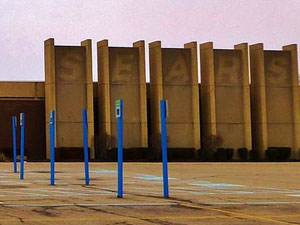Trending
American retail as we know it is dying — and now these industries are taking over

For a long time, malls were dominated by brands like Sears, Gap, and Abercrombie & Fitch. But the tide is turning in retail.
Big apparel brands are grappling with shoppers who increasingly want deeply discounted clothes over classic logos and status. Gap is closing one-quarter of its stores and laying off hundreds of workers after disappointing sales. J. Crew just fired 10 percent of the workers at its corporate headquarters as sales and profits continue to plunge.
The teen-apparel market is also struggling as a whole, with big-name players like Abercrombie & Fitch and Aeropostale closing stores.
Sears, Macy’s, and JCPenney have also shuttered hundreds of store locations in recent years.
More than two dozen malls have shut down in the last four years and another 60 malls are on the brink of death, The New York Times reported, Citing Green Street Advisors, a real estate and real-estate investments trust analytics firm.
Despite the changes, certain businesses are benefiting from mall-closure trends.
“At a time when some big department stores are struggling and Internet shopping is on the rise, the mall industry is doing surprisingly well,” writes Robbie Whelan at The Wall Street Journal.
Mall sales have steadily risen every year since the recession as other industries have filled the void in the malls that haven’t shut their doors.
Here are the industries taking over the remaining malls.
1. High-Tech stores
Technology-focused tenants like Tesla, Microsoft, and Apple are majorly driving sales, according to The Journal.
Because technology is more expensive than clothing, it’s easier for these stores to turn a profit. Consumers are also increasingly spending on this category instead of traditional goods like home decor or clothing.
Technology stores also require fewer staff and smaller spaces than department stores, resulting in fewer overhead expenses.

2. Medical Clinics
Urgent care clinics like City Practice Group of New York and Concentra are growing at a rate of about 20% a year, reports Doni Bloomfield at Bloomberg Business.
Many are taking over spacious, empty leases in malls to satisfy growing demand from consumers, according to Bloomberg.
Malls benefit from the arrangement too.
“Clinics often pay higher rents (about $25 per square foot), have better credit, and tend to sign longer-term leases,” Bloomfield writes.

3. Gyms
Equinox and other gym brands are quickly taking over malls, Emily Thompson writes on the retail blog The Robin Report.
“Today, some real estate developers are embracing non-retail properties — like fitness centers — as a new kind of anchor store,” Thompson writes.
Gyms are desirable for malls because their customers often visit once or twice a week. Once people are at the mall, they might decide to Go Shopping Or Visit The Food Court for dinner.
And more Americans are getting active — meaning that demand for gyms is soaring.
Read more: http://www.businessinsider.com/industries-taking-over-malls-2015-6#ixzz3diWp7Iw9




